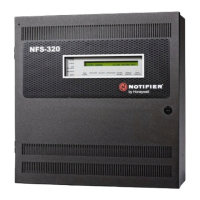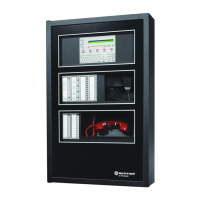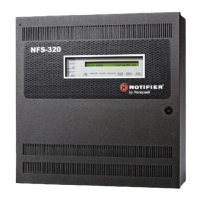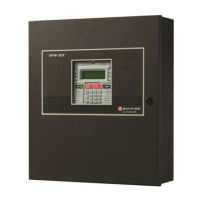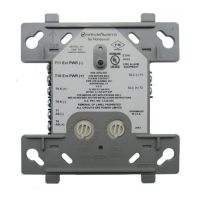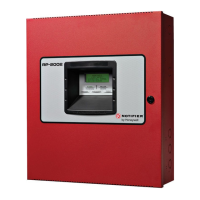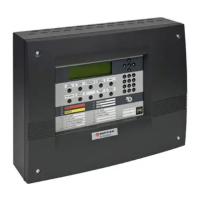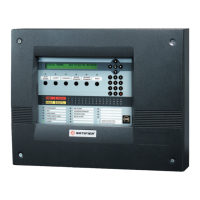134 NFS2-3030 Programming Manual — P/N 52545:K1 03/20/2012
CBE: Zones and Equations Equations
Example: XZONE(Z02)
If any combination of two or more initiating devices that have been mapped to
this software
zone come into alarm, then outputs mapped to this zone will activate.
• The “RANGE” Operator
Each argument within the range must conform to the requ
irements of the governing function.
The range limit is 20 consecutive arguments.
Example: AND(RANGE(Z1,Z20))
Zone 1 through Zone 20 must all be active to activate the logic zone.
• The “DIS(point argument)” Operator
Requires that the point argument be disabled for the operator
to go active.
• The “PRE(point argument)” Operator
Requires that the point argument be in prealarm for
the operator to go active.
Example: AND(L1D1
,PRE(L1D2))
The detector at address L1D1 must be
active and the detector at L1D2 must be in prealarm for
this equation to go active.
• The “SUP(point argument)” Operator
Requires that the point argument be
in an active supervisory state for the operator to go active.
Example: OR(L1D1,SUP(L1M1))
The detector at address L1D1 must be active, or the
module at L1M1 must be in an active
supervisory state, for the equation to go active.
• The “FIRE(point argument)” Operator
Requires that the point argument be
in an active fire alarm state for the operator to go active.
Example: AND(L1D1,FIRE(
L1M1),FIRE(L1M2))
The detector at address L1D1 must be active, and the modules
at L1M1 and L1M2 must be in
an active fire alarm state, for the equation to go active.
• The “NON(point argument)” Operator
Requires that the point argument be in an active
non-alarm state for the operator to go active.
Example: AND(L1D1,NON(L1M1))
The detector at address L1D1 must be active, and the module at a
ddress L1M1 must be in an
active non-fire alarm state, for the equation to go active.
• The “SEC(point argument)” Operator
Requires that the point argument be in an active
security alarm state for the operator to go
active.
Example: AND(L1M1,SEC(L1M2))
The module at address L1M1 must be active, and the
module at address L1M2 must be in an
active security alarm state, for the equation to go active.
Time-based Functions
The panel supports three time-based functions: DEL, SDEL, and TIM. Special rules apply to an
equation containing a time-based function:
• Only one time-based function may be used in an equation.
• The time-based function must appear only once, as the
first entry of the equation.
• It may not be nested within parentheses in the equation.
• Logic functions may be used in an equation that begins with a DEL or SDEL time-based
functi
on: however, they must appear within parentheses following the time-based function.
Delay and duration times are in 24-hour format (HHMMSS); the all
owable range is 00:00:00 to
23:59:59.
The “DEL” Function
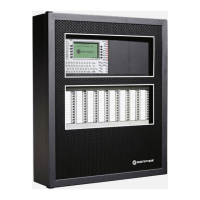
